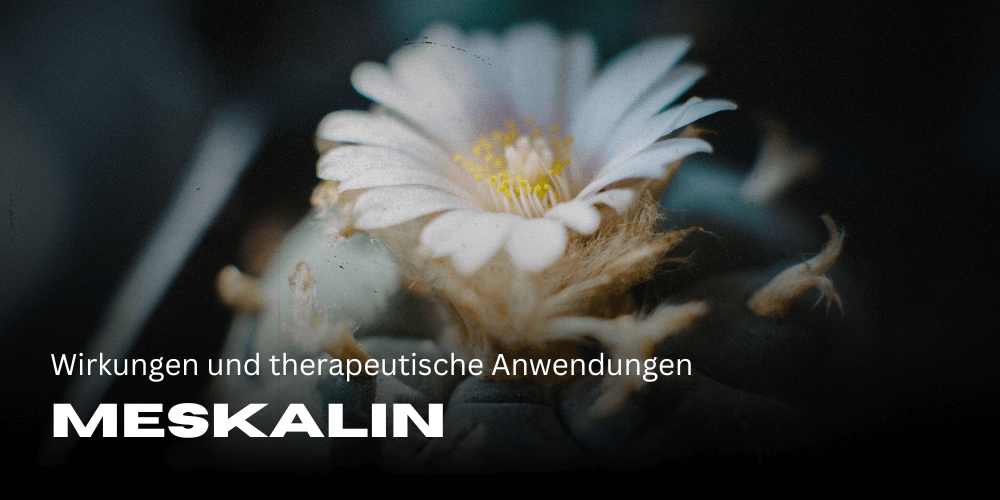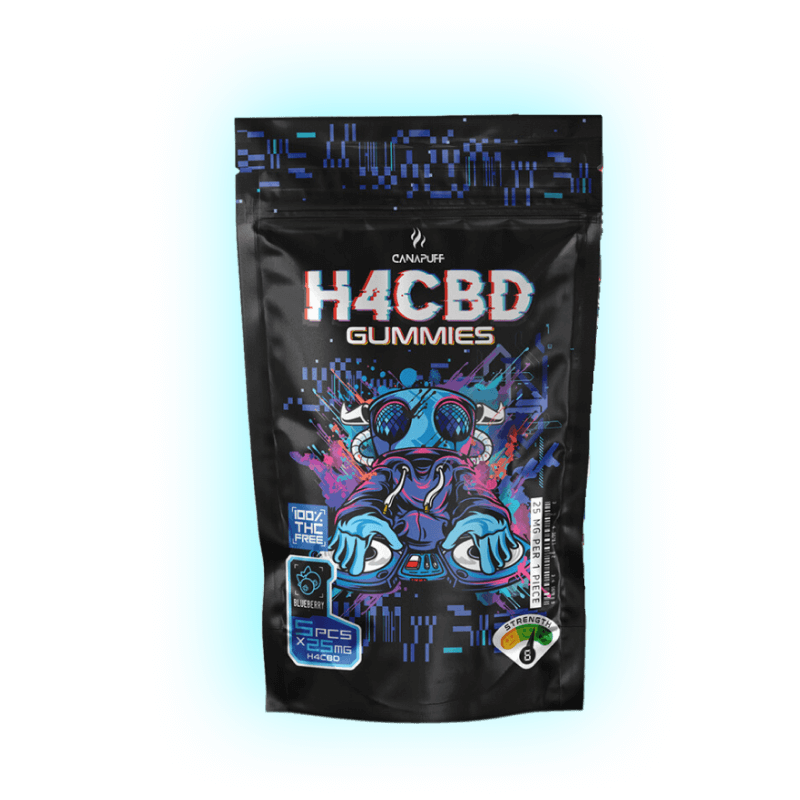Mescaline: effects and therapeutic applications

Inhaltsverzeichnis: Mescaline: effects and therapeutic applications
Mescaline is one of the most fascinating and controversial substances in the field of psychedelic drugs. It has a long history of use in spiritual and shamanic rituals and is now increasingly being studied by science. In this blog post, we want to give a comprehensive insight into mescaline, its origins, effects and modern research.
What is mescaline?
Mescaline is a naturally occurring alkaloid found mainly in certain species of cacti such as the Peyote and San Pedro cactus. It is known for its powerful hallucinogenic properties that can induce intense visual and emotional experiences. Mescaline has a chemical structure similar to that of dopamine and norepinephrine, and primarily affects the serotonin receptors in the brain.
Why this blog post about mescaline?
With the growing curiosity and acceptance of psychedelic substances, both in medicine and pop culture, it is important to provide sound information about mescaline. This blog post aims to educate, dispel misconceptions and provide an overview of the history, cultural significance and current state of research on mescaline.
History and cultural significance of mescaline
Mescaline has a rich and diverse history that is deeply rooted in the traditions of indigenous peoples of North and South America. It was and is still used in religious ceremonies and healing rituals. This cultural significance and the spiritual use of mescaline are essential aspects to understand in order to grasp the substance in its full context.
Origin and traditional use
The use of mescaline dates back thousands of years. Indigenous peoples, such as the Huichol and the Navajo, use cacti containing mescaline in their spiritual practices and healing rituals. In these ceremonies, mescaline is considered sacred and helps participants to experience deep spiritual insight and healing. This traditional use is often strictly regulated and respects the powerful effects of the substance.
Modern research on mescaline
In recent decades, scientific research has begun to investigate the effects and potential therapeutic applications of mescaline. Studies have focused on the neurobiological mechanisms affected by mescaline, as well as the potential benefits for the treatment of mental disorders such as depression and PTSD. Modern research has the potential to expand the understanding and acceptance of mescaline in medicine and society.
Chemical properties and mode of action of mescaline
Mescaline is a powerful hallucinogen that has profound effects on the brain and cognition. It is an alkaloid found in several species of cactus and has been used in religious and spiritual ceremonies for centuries. To understand the effects and potential of mescaline, it is important to gain an insight into its chemical properties and how it works in the brain.
The chemistry behind mescaline
Mescaline belongs to the phenethylamine class and is structurally similar to certain neurotransmitters in the brain, particularly dopamine and norepinephrine. This chemical structure allows mescaline to bind to serotonin receptors and modulate their activity. The substance is typically consumed in the form of dried cacti or synthetically produced crystals. Its hallucinogenic effects are due to its ability to alter the normal functions of neurotransmitters, resulting in the characteristic visual and sensory distortions.
Mechanism of action in the brain
Mescaline acts primarily on the brain's serotonergic system by binding to the 5-HT2A receptors. These receptors play a key role in the regulation of mood, perception and cognition. By binding to these receptors, mescaline alters neuronal communication and can induce intense visual and auditory hallucinations. These effects can last up to 12 hours and often include changes in the sense of time, heightened emotions and deeper introspective experiences.
Experiences and effects of mescaline
Experiences with mescaline are subjective and can vary greatly depending on the dose, individual set (mental state) and setting (environment). Many users report profound spiritual experiences and an altered perception of reality. Nevertheless, it is important to consider both the positive effects and the potential risks and negative effects.
Positive effects and applications
Mescaline can produce positive effects such as increased self-reflection, spiritual enlightenment and heightened sensory perception. In therapeutic contexts, research is being conducted into how mescaline can help in the treatment of mental disorders such as depression, anxiety and post-traumatic stress disorder (PTSD). There is evidence that mescaline can break deep-rooted psychological patterns and enable new perspectives, which could contribute to healing and personal development.
Negative effects and risks
Despite the potential benefits, the use of mescaline is not without risks. Negative effects include nausea, vomiting, anxiety and paranoia. In rare cases, intense hallucinations can lead to psychotic episodes, especially in those with a history of mental illness. There is also a risk of an unpredictable and potentially traumatic experience, which is why mescaline should always be used with caution and under appropriate conditions.
Mescaline in today's society
In modern society, interest in psychedelic substances such as mescaline is on the rise again. While it was historically used in spiritual and shamanic contexts, mescaline is now also being studied from a scientific and medical perspective. The legal situation and potential therapeutic applications are central topics in the current discussion about mescaline.
Legal situation worldwide
The legal situation of mescaline varies greatly from country to country. In many countries, including Germany, the possession, sale and use of mescaline is illegal. It is classified as a controlled substance, which means that its use is strictly regulated. In some regions of the USA, however, the use of peyote cacti containing mescaline is permitted in religious ceremonies for recognized indigenous groups. These different legal frameworks reflect the complex cultural and social views on mescaline.
Medical and therapeutic perspectives
Medical research on mescaline has increased in recent years, particularly in the field of psychotherapy. Studies are investigating how mescaline can be used in the treatment of mental illnesses such as depression, anxiety and post-traumatic stress disorder (PTSD). There is evidence that mescaline can help resolve deep-rooted emotional and psychological problems by providing new perspectives and insights. However, further research is needed to fully understand the safety and efficacy of these treatments.
Conclusion
Mescaline is a powerful substance with a rich history and significant cultural roots. It offers unique insights into the human psyche and has the potential to be helpful in therapeutic contexts. At the same time, it is important to consider the risks and legal aspects to ensure responsible and informed use of mescaline.
Summary of the most important points
Mescaline is a hallucinogenic alkaloid found in certain species of cacti and has historically been used in spiritual rituals. It acts on the serotonin receptors in the brain and can induce intense visual and emotional experiences. The legal situation varies around the world, and in many countries mescaline is illegal. Modern research is investigating its potential therapeutic applications, particularly in the treatment of mental disorders.
Outlook for future developments
The future of mescaline research looks promising as more and more scientific studies investigate its potential medical benefits. It is possible that mescaline could play a larger role in psychotherapy in the coming years, especially if further research confirms its efficacy and safety. At the same time, the debate over the legal regulation and social acceptance of mescaline will continue as views on psychedelic substances evolve.
















